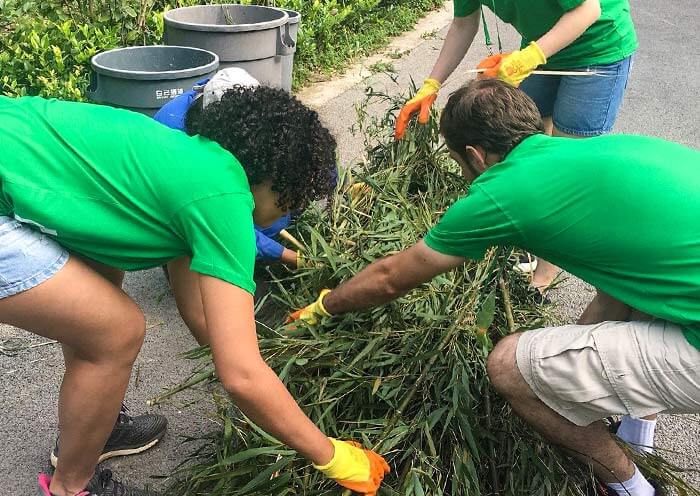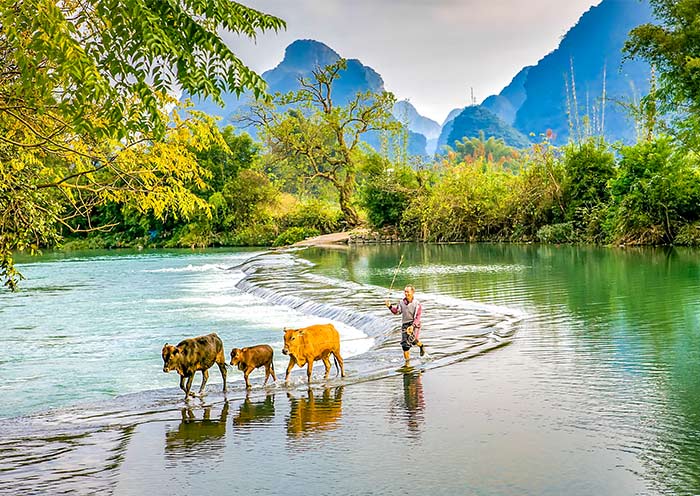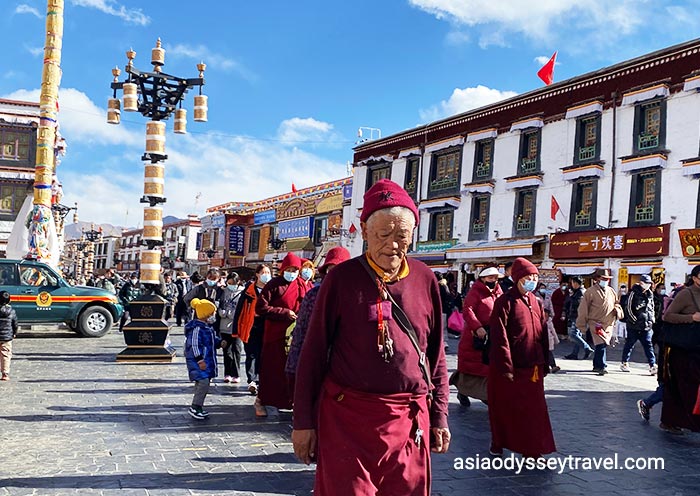Panda Volunteer | Best China Panda Volunteer Program 2024
Giant Pandas are undoubtedly some of the most beloved creatures on our planet, with their endearing faces and playful personalities captivating people from all corners of the globe. Fortunately for those seeking an opportunity to witness these adorable animals in their natural habitat, Sichuan, located in southwest China, is the real panda sanctuary, home to around 2000 Giant Pandas that can be observed both in the wild and in established panda bases.
For the ardent panda fans, the chance to participate in a PANDA VOLUNTEER PROGRAM is a dream come true. There are three panda bases in China/Sichuan that offer such programs, including Dujiangyan Panda Base, Wolong Panda Base, and Ya'an Bifengxia Panda Base. These programs usually last for around a day, and they offer a chance to get involved in a diverse range of tasks, from preparing meals and cleaning enclosures to monitoring the pandas' well-being and behavior. As a panda volunteer, you will also have the chance to engage in educational initiatives and interact with visitors, helping to raise awareness about the critical need for panda conservation and inspiring others to take action. However, the real highlight of any panda volunteer program is the chance to be in close proximity to these gentle giants - observing them play in their enclosures is an experience that is truly unparalleled.
As a local travel agency based in Chengdu, we are professionals to arrange every aspect of your panda volunteer program, from connecting you with the panda bases to making reservations, arranging transportation/sightseeing tours, providing local guides, and combining other attractions in Sichuan. Our comprehensive services ensure that all you need to do is sign up for a panda volunteer program in 2024 and become a panda volunteer, leaving a lasting impression on your heart and soul.

"Excellent Tour, best experience"
"A unique experience despite a difficult context thanks
to an experience team of organisers"
- Panda Volunteer in Dujiangyan & Wolong Panda Bases
- Recommended Chengdu Panda Tours
- Articles & Planning
Panda Volunteer in Dujiangyan & Wolong Panda Bases
Volunteering with these gentle giants is an experience of a lifetime. But how do you choose the best panda base? Dujiangyan, Wolong, and Ya'an Bifengxia are three of the most popular destinations for panda volunteer programs, where visitors can work closely with these magnificent creatures and make a significant contribution to their conservation efforts. To help you make the most of your experience, we've curated a list of 4 best panda volunteer tours, ranging from 1 day to 4 days. You can choose the tour that best suits your needs and preferences, allowing you to tailor your experience to your schedule and interests.
Recommended Chengdu Panda Tours
If you are short on time, seeing pandas is also once-in-a-lifetime experience. The best place to see Giant Panda is Chengdu Panda Base, the Chengdu Research Base of Giant Panda Breeding. The base was founded in 1987 and is now home to approximately 100 giant pandas, making it one of the largest panda breeding centers in the world. Explore our selection below for some exciting panda ideas and get ready for an unforgettable journey into the heart of panda country!
Best China Panda Tour Packages
Don't limit your visit to just Chengdu - expand your horizons and tour beyond the PANDA CITY! Many travelers choose Chengdu as a gateway city to start a long China tour, covering other breathtaking destinations such as Guilin & Yangshuo, the Yangtze River, Xian, Tibet, Yunnan, Beijing, Shanghai, Zhangjiajie and more. With a variety of options, you can pick the destinations that interest you the most and create a truly unforgettable journey from Chengdu!
Panda Volunteer FAQs - Plan Your Panda Volunteer Worry-Free
-
 1. What are the Top 10 Fun Facts about Pandas?
1. What are the Top 10 Fun Facts about Pandas?
1). Pandas are good at climbing trees.
2). Pandas are good swimmers.
3). Pandas are bears that do not hibernate.
4). Pandas are carnivores but mainly eat bamboo (99% of their diet).
5). Pandas occasionally eat eggs, fish, and even small mammals.
6). Pandas spend 10-16 hours a day eating bamboo.
7). Pandas poo 40 times daily (100 droppings per day; about 20kg poo).
8). Adult pandas can weigh up to 125 kg, while newborn pandas weigh around 200g.
9). Pandas have a sixth finger, called a "Pseudo-thumbs" (helpful like a hand).
10). The name "panda" originally referred to the red panda until the discovery of the giant panda.
-
 2. Where can I see giant pandas? How many giant pandas are left in the wild?
2. Where can I see giant pandas? How many giant pandas are left in the wild?
Most giant pandas live in a few mountain ranges in central China. The best way to see pandas is at conservation and breeding centers in China, such as the Chengdu panda Base, Dujiangyan Panda Valley, Dujiangyan Panda Base, Wolong Panda Base, Bifengxia Panda Base, and Shaanxi Foping Panda Base. You can view various pandas, including newborn cubs, in indoor-outdoor enclosures and nurseries.
Zoos around the world also have some pandas, but their populations are limited. Countries like the US, Canada, Belgium, France, Thailand, and others have pandas in zoos. For example, giant pandas can be seen at zoos in the US, such as the San Diego Zoo, Zoo Atlanta, and the Smithsonian's National Zoo in Washington, DC.
It is possible to see giant pandas in the wild, particularly in Giant Panda National Park, although it can be challenging as they are rare and elusive animals. There are approximately 1,864 giant pandas left in the wild, mostly in the mountainous regions of Sichuan, Shaanxi, and Gansu in China. However, their numbers are slowly increasing from around 1,000 wild pandas in the 1980s due to conservation efforts.
Furthermore, research shows that 85% of wild giant pandas reside in Sichuan province, China. The Chengdu section of the Giant Panda National Park, which is the habitat of giant pandas in the wild, is home to 73 wild giant pandas, according to the fourth national giant panda survey.
-
 3. What elevation do pandas live at? Can pandas survive in the snow?
3. What elevation do pandas live at? Can pandas survive in the snow?
Giant pandas live in the mountains of southwestern China, in damp and misty forests, mostly at elevations between 1,200 and 3,500 meters. They require old-growth conifer forests with at least two types of bamboo and access to water.
Giant pandas are adapted to the Quaternary glaciation and are capable of withstanding cold temperatures. They do not hibernate in the winter and are active even when the temperature drops to between -4℃ and -14℃. They are able to move through snow-covered bamboo forests without difficulty.
Giant pandas actually enjoy playing in the snow, and it is not uncommon to see them rolling around in it. If you visit the Wolong Panda Base during the winter, you may be able to witness this playful behavior.
-
 4. Are giant pandas a type of bear? How long do giant pandas live?
4. Are giant pandas a type of bear? How long do giant pandas live?
Yes, giant pandas are a type of bear unique in China and are classified as a member of the family Ursidae.
The average lifespan of a giant panda in the wild is about 15-20 years. However, with proper care in captivity, they can live into their 30s. The oldest panda in captivity was Jia Jia, who lived to 38 years old.
-
 5. How long is a typical panda tour? How much does a panda tour cost?
5. How long is a typical panda tour? How much does a panda tour cost?
A panda tour can range from a half-day excursion to a multi-day trip, depending on the itinerary and activities included.
The cost of a panda tour varies depending on the length of the tour, the activities included, and the level of luxury. Prices can range from a few hundred to several thousand dollars.
Typically, panda tours include visits to conservation centers (panda bases) to see and learn about the pandas. Other activities may include a panda volunteer program, a panda habitat hike, sightseeing at world heritage sites, museum visits, kid-friendly cultural activities such as Kung Fu lessons and traditional tea ceremonies, Sichuan Opera performances, Chinese meals, and tour guides.
Panda tour prices vary but average around $100-$300 per person for a full-day visit, depending on the itinerary, accommodation, and time of year.
-
 6. Are there any Chengdu tours that include a visit to the panda sanctuary?
6. Are there any Chengdu tours that include a visit to the panda sanctuary?
Yes, many Chengdu tours include a visit to the Chengdu Research Base of Giant Panda Breeding, which is a highlight of the city.
-
 7. How long to spend at Chengdu Panda Base?
7. How long to spend at Chengdu Panda Base?
On average, most visitors spend around 2 to 3 hours at the Chengdu panda base. This allows enough time to see the pandas, watch them eat and play, visit the enclosures, and take pictures. Please remember that pandas only play in morning. If you go to the base in the afternoon, you can only see them sleeping.
If you are a big panda fan, it is recommended to attend Panda Volunteer Program. It takes a full day. You will get up close to China's most iconic animal. You will clean captive pandas' bedrooms, prepare fresh bamboo for the fluffy pandas, make panda cakes in different shapes for the vegetarian pandas, watch the panda caretaker feed a panda at a very close distance, meet oversea returnee pandas with your expert panda guide, listen to the stories behind the rescued wild pandas, say hi to companion animals of pandas, and receive a unique Panda Volunteer Certificate.
-
 8. When is the best time to visit pandas in China?
8. When is the best time to visit pandas in China?
The best time of year to visit pandas in China is during the spring and fall, when the weather is mild and the bamboo is in bloom. Spring (March-May) has pleasant temperatures, and pandas are more active during this time. In the fall, you can see baby pandas that were born in the summer.
Moreover, the best time to see the Giant Pandas is during their meal times or play times. Pandas love cool weather, so early morning before 9 o'clock is a suitable time to watch them when they are more active. For instance, you can observe their playtime from 10:30 am to 11:00 am and their lunchtime from 11:00 am to 12:00 pm.
Latest Panda Volunteer Reviews from Our Customers

Maziar
Australia
Destination(s): Beijing, Xian, Shanghai, Tibet, Chengdu/Sichuan
Date of Experience: Jul 07, 2023
Tour Customized by: Isaac
You May be Interested in This Tour: 15 Days China Group Tour: Classic China, Panda & Holy Tibet Tour

Tom
USA
Destination(s): Beijing, Xian, Shanghai, Chengdu/Sichuan
Date of Experience: May 16, 2023
Tour Customized by: Emma
You May be Interested in This Tour: 10 Days China Family Classic Tour with Panda Kingdom

Jackson
Germany
Destination(s): Beijing, Xian, Chengdu/Sichuan, YangtzeRiver, Chongqing
Date of Experience: Sep 05, 2019
Tour Customized by: Amy
You May be Interested in This Tour: 15 Days Diverse China Tour with Pandas, Yangtze & Zhangjiajie Mountains
- United States (+1)
- Australia (+61)
- Singapore (+65)
- Malaysia (+60)
- Philippines (+63)
- Canada (+1)
- Italy (+39)
- Indonesia (+62)
- United Kingdom (+44)
- Spain (+34)
- Mexico (+52)
- Hong Kong (+852)
- Thailand (+66)
- United Arab Emirates (+971)
- New Zealand (+64)
- South Africa (+27)
- Germany (+49)
- Brazil (+55)
- India (+91)
- France (+33)
- Vietnam (+84)
- The Netherlands (+31)
- Saudi Arabia (+966)
- Ireland (+353)
- Argentina (+54)
- Switzerland (+41)
- Romania (+40)
- Pakistan (+92)
- Japan (+81)
- Portugal (+351)
- Bangladesh (+880)
- South Korea (+82)
- Puerto Rico (+1)
- Türkiye (+90)
- China (+86)
- Belgium (+32)
- Qatar (+974)
- Greece (+30)
- Taiwan (+886)
- Austria (+43)
- Poland (+48)
- Israel (+972)
- Chile (+56)
- Sri Lanka (+94)
- Nigeria (+234)
- Peru (+51)
- Colombia (+57)
- Hungary (+36)
- Nepal (+977)
- Denmark (+45)
- Bulgaria (+359)
- Norway (+47)
- Slovenia (+383)
- Sweden (+46)
- Kuwait (+965)
- Costa Rica (+506)
- Ecuador (+593)
- Venezuela (+58)
- Malta (+356)
- Croatia (+385)
- Tunisia (+216)
- Czechia (+420)
- Mongolia (+976)
- Bahrain (+973)
- Mauritius (+230)
- Papua New Guinea (+675)
- Cambodia (+855)
- Dominican Republic (+1)
- Luxembourg (+352)
- Finland (+358)
- Guatemala (+502)
- Myanmar (+95)
- Maldives (+960)
- Slovakia (+421)
- Laos (+856)
- Serbia (+381)
- Brunei (+673)
- Oman (+968)
- Macao (+853)
- Panama (+507)
- Morocco (+212)
- Jordan (+962)
- Georgia (+995)
- Fiji (+679)
- Bolivia (+591)
- Lithuania (+370)
- Bahamas (+1)
- Cyprus (+357)
- Latvia (+371)
- Bhutan (+975)
- Iraq (+964)
- Iran (+98)
- Kenya (+254)
- Jamaica (+1)
- Zimbabwe (+263)
- Azerbaijan (+994)
- Uruguay (+598)
- Estonia (+372)
- Andorra (+376)
- Cameroon (+237)
- Ghana (+233)
- Kazakhstan (+7)
- Nicaragua (+505)
- Egypt (+20)
- Russia (+7)
- Albania (+355)
- Réunion (+262)
- Montenegro (+382)
- Algeria (+213)
- Afghanistan (+93)
- Martinique (+596)
- Uganda (+256)
- Honduras (+504)
- North Macedonia (+389)
- Trinidad and Tobago (+1)
- Suriname (+597)
- Antigua and Barbuda (+1)
- Zambia (+260)
- Ukraine (+380)
- Armenia (+374)
- Barbados (+1)
- Belarus (+375)
- Palestine (+970)
- Lesotho (+266)
- Moldova (+373)
- Ethiopia (+251)
- French Polynesia (+689)
- Gambia (+220)
- Guam (+1)
- Gibraltar (+350)
- Isle of Man (+44)
- New Caledonia (+687)
- El Salvador (+503)
- Comoros (+269)
- Seychelles (+248)
- Chad (+235)
- Samoa (+685)
- Cook Islands (+682)
- Palau (+680)
- Paraguay (+595)
- DR Congo (+243)
- Solomon Islands (+677)



















